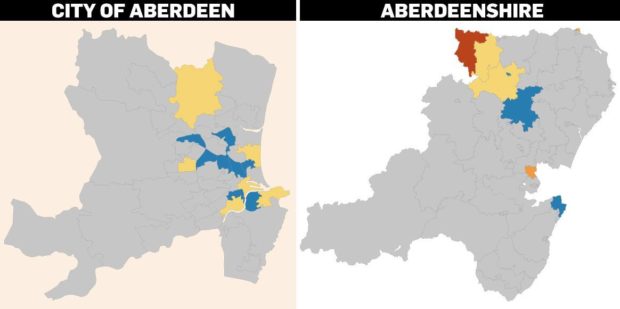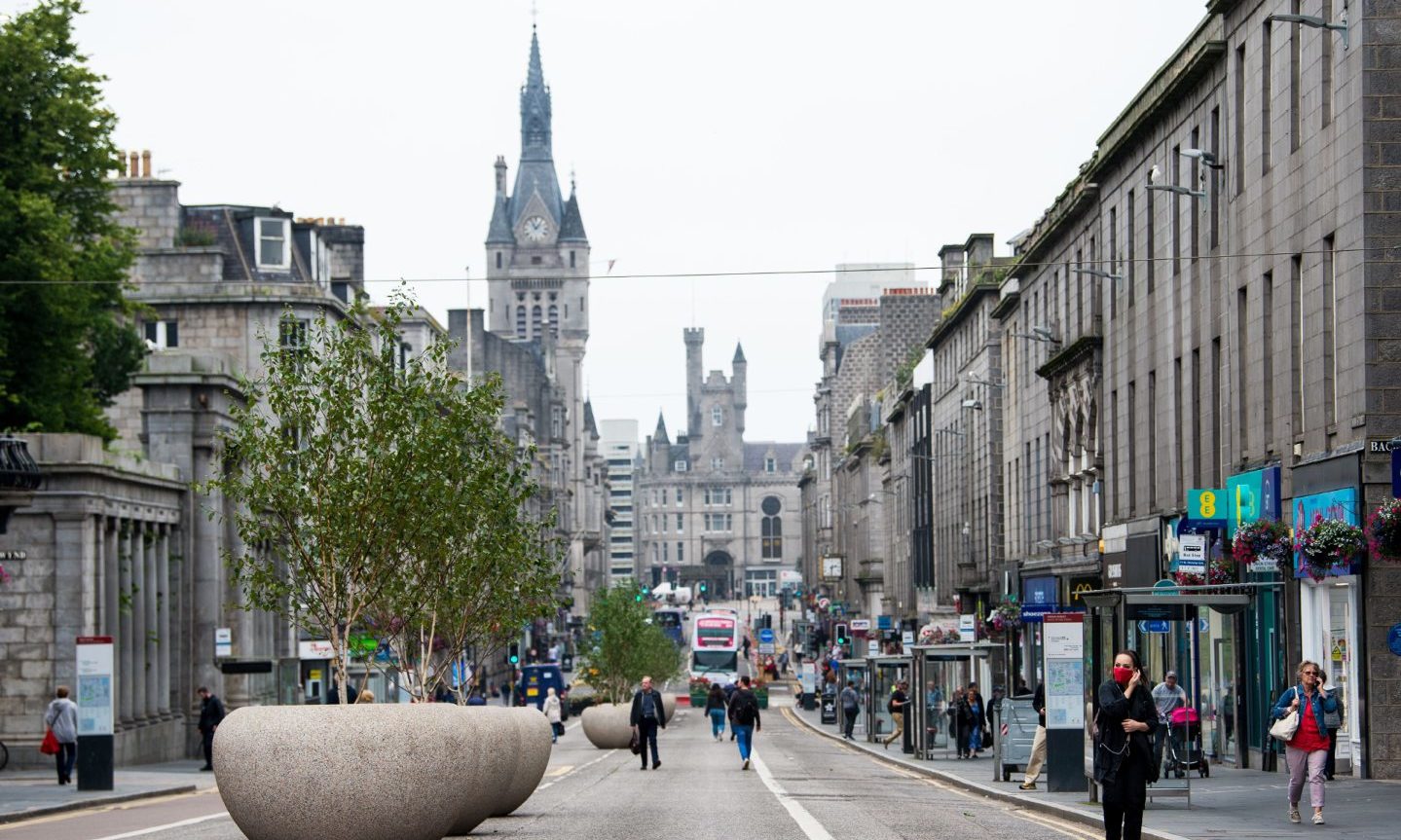Covid cases in the north-east have increased by a third according to the latest figures.
Between March 7 and March 13, 180 cases were confirmed in the region.
This is an increase of 45 (33%) on the previous seven-day period.
However, as Scotland looks towards an easing of restrictions next month, Aberdeen and Aberdeenshire remain among the council areas with the lowest seven-day rate.
In mainland Scotland, only Argyle & Bute, the Borders, Dumfries & Galloway, Angus, Moray and Inverclyde have a lower rate than Aberdeen or Aberdeenshire.
Glasgow, East Renfrewshire and Stirling are the areas with the highest rates.
How is the positivity rate calculated?
Case numbers can be put into context by looking at them as a rate per 100,000 population.
This rate is then categorised into one of five bands by Public Health Scotland (PHS). If the number of cases in the seven-day period is two or less, it is marked as suppressed.
Each area of the country has been divided into regions of roughly similar populations, and are the same used in a wide range of national datasets released by the Scottish Government.
In the past day, there have been seven new deaths registered, taking the country’s toll to 7,517.
And nearly 30 new cases of Covid have been confirmed in the north-east.
A total of 210,605 people have now tested positive in Scotland, with 597 new cases reported in the past 24 hours.
What’s the picture like Scotland wide?
The Scotland-wide seven-day positive rate per 100,000 population is 72.6, with 3,965 people testing positive during this period – down around 400 on the previous week.
Of all the tests carried out, 3.3% returned a positive result.
The area of the country with the highest positivity rate is Glasgow, with a rate of 132.7 per 100,000
Aberdeen
Aberdeen has an average rate per 100,000 population of 42 up from 29.7 during the previous seven-day period.
Ninety-six positive cases of Covid-19 were identified during this period, an increase of 41% (28) on the previous period.
Of all the tests carried out in the region, 1.9% were positive.
A map showing the breakdown of cases by neighbourhood reveals no neighbourhoods in Aberdeen are in the two highest categories.
However, Oldmachar West, Mastrick and Torry East, City Centre East, Seaton and Ferryhill South all have a positive rate higher than 100 cases per 100,000 people.
Several junior pupils at Mile End school in Aberdeen remain in isolation after a positive case was identified last week.
Councillor Alex McLellan, who represents the Seaton area, said: “It is incredibly important that we all continue to stick to the rules to minimise the spread of Covid-19.”
Meanwhile, Councillor Jackie Dunbar, who represents Mastrick, added: “There can be many reasons for the rise in cases in Mastrick, I am not aware of any specific reason for it.
“I would encourage everyone to continue following Facts and together we will beat this virus’.”
Elsewhere in the city, only eight other areas have their cases displayed, meaning 70% of Aberdeen’s neighbourhoods only recorded between zero and two cases last week.
Public Health Scotland doesn’t display figures below this level to prevent the identification of individuals.
Aberdeenshire
In Aberdeenshire, there have been 84 cases in the last seven-day period, with a positive rate of 32.2 per 100,000 – below that of the Scottish average.
The test positivity rate for the region, at 1.5% is also below that of the national average.
The neighbourhood of Portsoy, Fordyce and Cornhill is currently in the highest category, with a rate of more than 400 cases per 100,000 people.
In the seven days between March 7 and 13, 17 cases were detected in the area.
Aberdeenshire Council wrote to parents of Portsoy School and Nursery on Friday after several cases of the virus were linked to the school.
One primary class was asked to go back to home learning so they could self-isolate.
The move came just days after the school’s nursery was forced to close due to staff shortages linked to Covid.
Council officials have confirmed that pupils have now returned to the classroom.
Their return coincides with the reintroduction of pupils in P4-P7 to the school as restrictions begin to slowly ease across Scotland.
The adjacent communities of Aberchirder and Whitehills has also seen a number of cases detected over the same period.
Elsewhere in the region, both Fraserburgh Harbour and Broadsea, and Blackburn are in the second-highest category, with rates between 200 and 399 per 100,000.
According to the latest figures from Public Health Scotland nine cases were detected in Fraserburgh Harbour and Broadsea and seven identified in Blackburn.
The vast majority of the region, however, still has its data suppressed. Fifty of Aberdeenshire’s 59 regions have between zero and two cases.
https://www.eveningexpress.co.uk/fp/news/specials/coronavirus-in-scotland-track-the-spread-in-these-charts-and-maps2001/
https://www.eveningexpress.co.uk/fp/news/specials/covid-vaccine-in-scotland-track-the-rollout-progress-with-these-charts/

